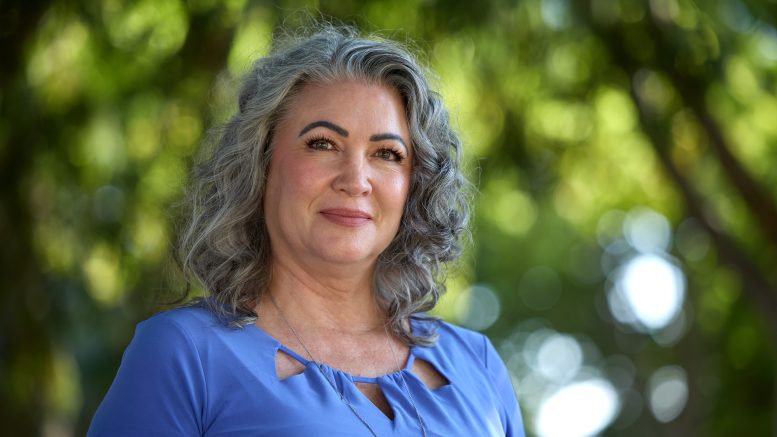By Seth Sandronsky
Sheri Green is a division manager for Sacramento County Behavioral Health Services. She specializes in providing mental health services for the unhoused population. Green worked on a funding application for the state Department of Health Care Services, which recently awarded $43 million to the County for Behavioral Health Bridge Housing (BHBH).
The grant is designed to support unhoused people living with mental illness find affordable and stable housing across the capital region. One such site is on Florin Road now, and there are shovel-ready and rehab projects that are going out to bid.
Green recently spoke with Solving Sacramento to discuss the link between wraparound services and mental health support to bridge the gap between homelessness and permanent supportive housing for unhoused people living with mental illness.
How will the state grant of $43 million help unhoused individuals living with mental illness in the Sacramento region?
The [BHBH] grant of $43 million from the state is set up to bridge the gap from homelessness such as living outdoors or in encampments to a permanent housing opportunity. This funding, in part, pays salaries for staffing and creating housing units. The funding runs through 2027.
Explain how bridge housing funds will support people in and out of the Community Assistance, Recovery, and Empowerment (CARE) Act. The act permits county judges to command housing support, substance use disorder and mental health treatment for those living with a psychotic or substance use disorder.
The two priority populations to serve are the following: The first is people who are homeless and experiencing mental health issues. The second is folks designated as CARE Act recipients, [those] who are vulnerable from mental health issues and have a history of homelessness.
How will people who find housing maintain their mental health support, upon leaving the bridge program?
This is an important piece of the equation, ensuring that the population transitioning to stable housing remains there. It does not do any good to find bridge housing for homeless people and have them burn out after they secure it. Part of the solution is linking recipients with mental health providers, who are part of the bridge housing team, into that supportive network. These professionals will continue with their clients. It could be permanently if that is the requirement under the CARE Act plan. Ours is an individualized program. Each client receives different support services. It is not a cookie-cutter approach.
How does the County’s behavioral health department help people improve mental and physical health, life skills and gain vocational or educational opportunities?
It is difficult to find sustainable housing without income, or a way to apply for aid such as Supplemental Security Income (SSI), providing monthly payments to people with disabilities and older adults who have little or no income or resources. It is challenging to find income without housing. We employ staff in the bridge program to help clients to receive income to make stable housing a reality. If clients cannot, for example, get to an attorney for a consult, we will transport them to see the lawyer. Many property owners will not rent to certain people with criminal history. We will work with clients to achieve expungement of criminal records to obtain employment. Many folks are dealing with significant physical health conditions while living homeless. We will help them to find solutions for their physical health conditions. If clients are elderly and have mental health issues while homeless, we will help them find age-appropriate resources.
What is the plan if participants are unable to transition to permanent housing within nine months?
Our goal is to get folks stable housing and to avoid returning them to homelessness. If we do not have housing for them, we will find them rooms in hotels. We are not going to put people back on the streets. The bridge housing program also provides funding for board and care, highly supervised 24/7 congregate living arrangements with transportation provided, for individuals unable to live independently. If folks choose to return to homelessness, we are not going to stop them from having their voice and choice.
What will happen next after the County spends the $43 million state grant?
In Sacramento County, we consider grant funding to be pilot funding. That is, we have an innovative and progressive county Board of Supervisors to work with to find a way to sustain funding for the bridge housing program. We will be tracking the outcomes to measure our success along the way, what is and is not working. The Board of Supervisors is on tap to enter into a state contract for the $43 million of bridge funding in October.
This Q&A has been edited for length and clarity.
This story is part of the Solving Sacramento journalism collaborative. Solving Sacramento is supported by funding from the James Irvine Foundation and Solutions Journalism Network. Our partners include California Groundbreakers, Capital Public Radio, Outword, Russian America Media, Sacramento Business Journal, Sacramento News & Review, Sacramento Observer and Univision 19.


Be the first to comment on "Sacramento County behavioral health manager Sheri Green on bridging the housing gap"